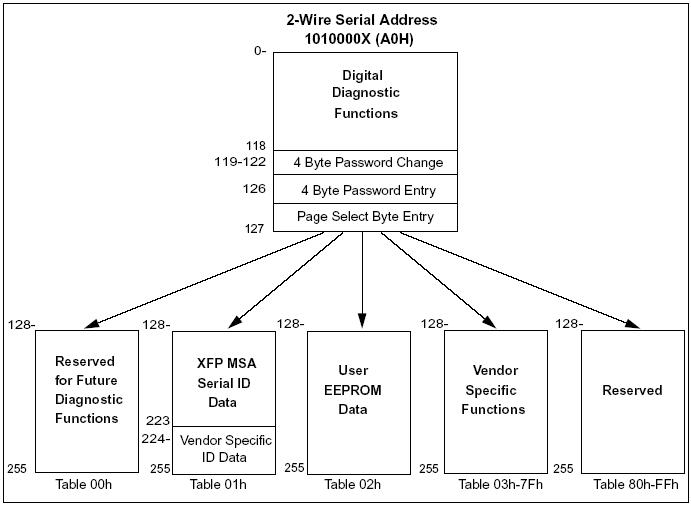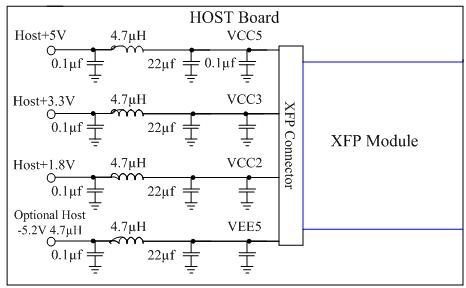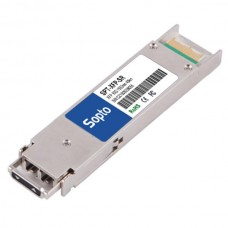
- Sopto Home
-

- 10G 850nm 300m XFP Optical Transceiver SPT-XFP-SR
- Fiber Optic Transceiver Module
- High Speed Cable
- Fiber Optical Cable
- Fiber Optical Patch Cords
- Splitter CWDM DWDM
- PON Solution
- FTTH Box ODF Closure
- PCI-E Network Card
- Network Cables
- Fiber Optical Adapter
- Fiber Optical Attenuator
- Fiber Media Converter
- PDH Multiplexers
- Protocol Converter
- Digital Video Multiplexer
- Fiber Optical Tools
- Compatible
- Fiber Optic Transceiver Module
- High Speed Cable
- Fiber Optical Cable
- Fiber Optical Patch Cords
- Splitter CWDM DWDM
- PON Solution
- FTTH Box ODF Closure
- PCI-E Network Card
- Network Cables
- Fiber Optical Adapter
- Fiber Optical Attenuator
- Fiber Media Converter
- PDH Multiplexers
- Protocol Converter
- Digital Video Multiplexer
- Fiber Optical Tools
- Compatible
10G 850nm 300m XFP Optical Transceiver SPT-XFP-SR

Features
- Supports 9.95Gbps to 10.5Gbps bit rates
- Maximum link length of 300m (50um, MMF, 2000MHz.Km)
- 50nm VCSEL laser and PIN receiver
- Low power consumption <1.5W
- +5V, +3.3V power supply
- XFP MSA package with duplex LC connector
- XFI electrical interface
- No reference clock required
- Compatible with RoHS
- Excelllent EMI performance
- Built-in digital diagnostic functions
- Temperature range: 0℃ to +70℃
- High reliability
Applications
- 10GBASE-SR/SW 10G Ethernet
- 1200-Mx-SN-I 10G Fibre Channel
- Other optical links
Description
It is compliant with the 10G Small Form-Factor Pluggable (XFP) Multi-Source Agreement (MSA), supporting data-rate of 10.3125Gbps(10GBASE-LR) or 9.953Gbps 10GBASE-LW), and transmission distance up to 300m on 50μm MMF (2000MHz.km).
The transceiver module comprises a transmitter with 850nm a vertical cavity surface emitting (VCSEL) laser and a receiver with a PIN photodiode. Transmitter and receiver are separate within a wide temperature range of 0℃ to +70℃ and offers optimum heat dissipation and excellent electromagnetic shielding thus enabling high port densities for 10 GbE systems.
Absolute Maximum Ratings
|
Rating |
Symbol |
Min |
Max |
Units |
Ref. |
|
Storage Ambient Temperature Range |
|
-40 |
+85 |
℃ |
|
|
Powered case Temperature Range |
|
0 |
+75 |
℃ |
|
|
Operating Relative Humidity |
RH |
|
80 |
% |
|
|
Supply Voltage Range @ 5V |
Vcc5 |
-0.5 |
6.0 |
V |
|
|
Supply Voltage Range @ 3.3V |
Vcc3 |
-0.5 |
4.0 |
V |
|
|
Static Discharge Voltage on XFI High |
|
|
500 |
V |
1 |
|
Static Discharge Voltage excluding XFI High Speed Pins |
|
|
2,000 |
V |
2 |
|
Static Discharge Voltage on XFP Module |
|
|
15,000 8,000 |
V V |
3 |
Any stress beyond the maximum ratings can result in permanent damage. The device specifications are guaranteed only under the recommended operating conditions.
Notes:
1, HBM human body model per JEDEC JESD22-A114-B.
2, HBM human body model.
3, EN61000-4-2 Criterion B:Air Discharge Direct Contact discharge
Recommend operating condition
|
Parameter |
Symbol |
Min |
Typ |
Max |
Units |
Ref. |
|
Operating Case Temperature Range |
Tc |
0 |
|
+70 |
℃ |
|
|
Transceiver total Power Consumption |
PTOT |
|
|
1.5 |
W |
1 |
|
Power Supply Voltage @ 5V |
Vcc5 |
4.75 |
5.0 |
5.25 |
V |
|
|
Power Supply Voltage @ 3.3V |
Vcc3 |
3.13 |
3.3 |
3.47 |
V |
|
Notes:
1, Maximum total power value is specified across the full temperature and voltage range.
Electrical Characteristics
Electrical Transmitter
|
Parameter |
Symbol |
Min |
Typ |
Max |
Units |
Ref. |
|
Input Differential Impedance |
RIND |
|
100 |
|
Ω |
1 |
|
Differential input Voltage Swing |
VID |
120 |
|
1000 |
mV |
2 |
|
Transmit Disable Voltage |
VDis |
2.0 |
|
VCC |
|
|
|
Transmit Enable Voltage |
VEN |
GND |
|
GND+0.8 |
|
|
|
Transmit Disable Assert Time |
|
|
|
10 |
us |
|
Notes:
1, After internal AC coupling.
2,Beneath this level the signal can’t meet the specification
Electrical Receiver
|
Parameter |
Symbol |
Min |
Typ |
Max |
Units |
Ref. |
|
Differential Output Impedance |
ZOD |
|
100 |
|
Ω |
|
|
Differential Output Amplitude |
VOSPP |
500 |
|
800 |
mV |
1 |
|
Transition Time Low to High |
t r |
40 |
|
|
ps |
2 |
|
Transition Time High to Low |
t f |
40 |
|
|
ps |
2 |
|
LOS Fault |
L fault |
Vcc-0.5 |
|
VCCHOST |
V |
3 |
|
LOS Normal |
L normal |
GND |
|
GND+0.5 |
V |
3 |
Notes:
1, Into 100 ohms differential termination.
2, 20 – 80 %.
3, Loss Of Signal is open collector to be pulled up with a 4.7kΩ – 10kΩ resistor to 3.15 – 3.6V. Logic 0
indicates normal operation; logic 1 indicates no signal detected.
Optical Characteristics
Optical Transmitter
|
Parameter |
Symbol |
Min |
Typ |
Max |
Units |
Ref. |
|
Nominal Wavelength |
ëTRP |
840 |
850 |
860 |
nm |
|
|
Spectral Width |
△λ |
|
0.4 |
0.45 |
nm |
|
|
Average Power |
Poptavg |
-7.5 |
|
-1 |
dBm |
1 |
|
Extinction Ratio |
ER |
3.0 |
|
|
dB |
2 |
|
Relative Intensity Noise |
RIN |
|
|
-128 |
dB/Hz |
|
Notes:
1, launched into MMF.
2, Measured with PRBS 231-1 @10.3125Gbps.
Optical Receiver
|
Parameter |
Symbol |
Min |
Typ |
Max |
Units |
Ref. |
|
Center Wavelength |
ëC |
840 |
850 |
860 |
Nm |
|
|
Receiver Sensitivity |
PIN |
|
|
-9.9 |
dBm |
1 |
|
Receiver Sensitivity in OMA |
PIN |
|
|
-11.1 |
dBm |
1 |
|
Receiver Overload |
Pin |
-1.0 |
|
|
dBm |
1 |
|
Receiver Reflectance |
|
|
|
-12 |
dBm |
|
|
LOS De-Assert |
LOSD |
|
|
-12 |
dBm |
|
|
LOS Assert |
LOSA |
-25 |
-15 |
|
dBm |
|
|
LOS Hysteresis |
|
0.5 |
|
|
dB |
|
Notes:
1, Measured with PRBS 231-1 @10.3125Gbps.
With ideal transmitter
Note: The specified characteristics are met within the recommended range of operating conditions and under the default settings of output power and modulation amplitude. A change in setting of the optical output power influences especially the dynamic behavior of the output signal. Unless otherwise noted typical data are quoted at nominal voltages and +25℃ ambient temperature.
General Specifications
|
Parameter |
Conditions |
Min Modal Bandwidth (MHz*Km) |
Symbol |
Min |
Typ |
Max |
Units |
Ref. |
|
Operating Range |
62.5/125μm MMF |
160 |
IOP |
2 |
|
26 |
m |
|
|
50/125μm MMF |
400 |
|
66 |
|
||||
|
62.5/125μm MMF |
200 |
|
33 |
|
||||
|
50/125μm MMF |
500 |
|
82 |
|
||||
|
50/125μm MMF |
2000 |
|
300 |
|
||||
|
Bit Rate |
|
|
BR |
9.95 |
|
10.5 |
Gbps |
1 |
|
Bit Error Ratio |
|
|
BER |
|
|
10 −12 |
|
2 |
Notes:
1. 10GBASE-SR/SW, 1200-Mx-SN-I
2. Tested with a 231 – 1 PRBS
Host Board Connector Pin out
TG-80D3.png)
Electrical Pin Definition
|
PIN |
Logic |
Symbol |
Name I Description |
Note |
|
1 |
|
GND |
Module Ground |
1 |
|
2 |
|
VEE5 |
Optional-5.2V Power Supply |
|
|
3 |
LVTTL-I |
Mod_DeSel |
Mode De-select; When held low allows module to 2-wire serial interface commands |
|
|
4 |
LVTTL-O |
Interrupt |
Interrupt(inverted); Indicates Presence of an important condition which can be read over the 2-wire serial interface |
2 |
|
5 |
LVTTL-I |
TX_DS |
Transmitter Disable; Turns off transmitter laser output |
|
|
6 |
|
VCC5 |
+5V Power Supply |
|
|
7 |
|
GND |
Module Ground |
1 |
|
8 |
|
VCC3 |
+3.3VPower Supply |
|
|
9 |
|
VCC3 |
+3.3VPower Supply |
|
|
10 |
LVTTL-I/O |
SCL |
2-Wire Serial Interface Clock |
2 |
|
11 |
LVTTL-I/O |
SDA |
2-Wire Serial Interface Data Line |
2 |
|
12 |
LVTTL-O |
Mod_Abs |
Indicates Module is not present. Grounded in the module |
2 |
|
13 |
LVTTL-O |
Mod_NR |
Module Not Ready; Indicating module operational fault |
2 |
|
14 |
LVTTL-O |
RX_LOS |
Receiver Loss Of Signal Indicator |
2 |
|
15 |
|
GND |
Module Ground |
1 |
|
16 |
|
GND |
Module Ground |
1 |
|
17 |
CML-O |
RD- |
Receiver Inverted Data Output |
|
|
18 |
CML-O |
RD+ |
Receiver Non-Inverted Data Output |
|
|
19 |
|
GND |
Module Ground |
1 |
|
20 |
|
VCC2 |
+1.8V Power Supply |
|
|
21 |
LVTTL-O |
P-Down/RST |
Power Down; When high; requires the module to limit power consumption to 1.5W or below. 2-Wire serial interface must be functional in the low Power mode Reset; The falling edge initiates a complete reset of the module including the 2-wire serial interface; equivalent to a power cycle |
|
|
22 |
|
VCC2 |
+1.8V Power Supply |
|
|
23 |
|
GND |
Module Ground |
1 |
|
24 |
PECL-I |
RefCLK+ |
Reference Clock Non-Inverted Input; AC coupled on the host board |
|
|
25 |
PECL-I |
RefCLK- |
Reference Clock Inverted Input; AC coupled on the host board |
|
|
26 |
|
GND |
Module Ground |
1 |
|
27 |
|
GND |
Module Ground |
1 |
|
28 |
CML-I |
TD- |
Transmitter Inverted Data Input |
|
|
29 |
CML-I |
TD+ |
Transmitter Non-Inverted Data Input |
|
|
30 |
|
GND |
Module Ground |
1 |
Notes:
1, Module ground pins GND are isolated from the module case and chassis ground within the module.
2, Shall be pulled up with 4.7kΩ-10 kΩ to a voltage between3.15V and 3.45V on the host board.
Management Interface
The transceivers provide serial ID memory contents and diagnostic information about the present operating conditions by the 2-wire serial interface (SCL, SDA).
The Module provides diagnostic information about the present operating conditions. The transceiver generates this diagnostic data by digitization of internal analog signals. Alarm/warning threshold data is written during device manufacture. Received power monitoring, transmitted power monitoring, bias current monitoring, supply voltage monitoring and temperature monitoring all are implemented.
The digital diagnostic memory map specific data field defines as following.

Recommended Host Board Power Supply Circuit

Recommended High-speed Interface Circuit

Mechanical Specifications
XFP transceivers are compliant with the dimensions defined by the XFP Multi-Sourcing Agreement (MSA).

E-mail: sales@sopto.com
Web : http://www.sopto.com




